| |
General
Originally chinchillas are resident in South America, they
live in the Andes states Peru, Chile, Bolivia and Argentina by heights up to
5000 m. There they live in available caves, rock fissures and similar taking
cover. They are put out there to strong temperature variations, hot summer days
become cold nights. The differences in temperature between day and night can
amount to 25 degrees. Their fur protects them well against this weather
influence, the animals do not stand only strong heat, temperatures more than 25
degrees can lead to the heat blow, because the animals cannot cool off by
sweating, they have no sweat glands. The vegetation in her original living space
is rather scanty. Chinchillas live on dry grass, herbs, branches, sheets and
cacti. Chinchillas live in big groups, ordinarily a male animal together with
several females. The chinchillas sleep away the day, only about evening they
become high-spirited and use the coolness and security of the night around many
hours with the feed search to spend and to maintain her social contacts.
The Chinchilla
Section
Mammal (Mammalia)
Systematic
Rodent (Rodentia)
Sub-systematic
guinea pig natured (Caviomorpha)
Top-family
Chinchillas (Chinchilloidea)
Family
Chinchillas (Chinchillidae)
Genus
Chinchillas (Chinchillas)
Art
Chinchilla (Chinchilla lanigera)
Derivation
South America (Argentina, Bolivia, Chile, Peru)
There in the rock regions of the Andes at a height of
app. 3500 - 4000 m
Life expectancy
app. 16-18 years, seldom up to 23
Body length app.
25-35 cm
Tail length
app.
10-13 cm + Fell
Weight
400 - 800 g
Puberty
young male 3 month, female app. 4-5
month
Pregnancy duration 111 days +/- 2-3 days
Number of birth
1-3 youngster, seldom more as up to 6), but not all will alive
Chinchilla as pet:
Buy no chinchilla to the play for your children, they are
no toys and only seldom to play and cuddle in the mood. Chinchillas own itself
well as domestic animals for adults, them are a dusk and postactively.
Chinchillas are herd animals. They should never hold the animals alone,
always min in twos and then two same-sexual animals.
Check to
yourselves with the help of the following questions whether chinchillas really
the suitable domestic animals for you Knowing you are the chinchillas:
... when home animals with appropriate to
the species posture and care up to 18 or can become even 22 years old?
... nocturnal animals are and, therefore,
during the day a quiet little place to sleep need?
... at all are not held with pleasure alone,
but always play at least one partner to, do cuddle and do clean need?
... can jump up up to two metres and that
this put up to her favorite plant honour as a nervous tickle is looked?
... own strong will own and mostly not so
tame as guinea pig become?
... are not suitable for children? Only from
a certain maturity of the child and a joint responsibility of the parents an
appropriate to the species posture is possible.
... delight not only by her physical fur
colour (standard / grey), but also are bred in many different colour variations?
... are pregnant up to 111 days and then
from 1 to 4 boys (in the rarest cases 6) agree?
. . complete
gnaw experts are and gnaw at them
everything what has not disappeared with 3?
... Long-term elimination and one must not
surprise if the sofa is suddenly covered with small excrements ?
... a big cage need in which they are able
to according to heart desire jump around and with rest undisturbed in dark
corners can creep away?
... live on blossoms, herbs and Pellets?
Almost all other causes stomach problems and intestinal problems.
... a bath need? However, no normal, but one
with the special chinchilla bath sand which serves for the fur care.
Food:
Chinchillas live in the Andes in a very dry area poor in
vegetation. They live there on dry grass, herbs, branches, sheets and cacti.
The chinchilla is an easy boarder, however, loves the
change. Please not, overfeed the chinchilla. The hip bones of every animal must
be always well perceptible while feeling and the Futternapf must be almost empty
every evening. The chinchilla must have before the feeding obviously and audible
hunger.
If one appears to his new house comrade a little, and one
follows the mentioned peculiarities of the chinchillas, in particular theirs,
the scanty plateaus of the Andes conformist Menuplan, one will always have a
cleaning-cheerful and healthy chinchilla.
In addition to the basic feed Peeling and perhaps herbal
mixtures and punch mixtures one can use in masses likewise green fodder.
To especially own to itself for this, for
example:
Dandelion, thistles, alfalfa, sage, Topinamburblätter, dead
nettles, stinging nettles, strawberry leafs, raspberry
leafs, bean sheets, celery, chicory, spinach, endives, young oat, wheat
with piston and apple sheets, carrots with sheets, in addition, fruit like
strawberries, apples, plums, oranges and bananas of all please only in tiny
amounts!
One should not feed :
Valerian, fern, crowfoot, poppy, potatoes and tomatoes,
also no cabbage and no legumes.
As a tidbit raisins, figs, dry plums, dry apples, rose hips,
rusk and solar flowers cores may be fed from time to time.
Following belongs to a good chinchilla food:
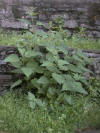 |
stinging nettle Milk production stimulatingly,
urinary-afloat, promote the sore healing, Blood-cleaning, to the
strengthening |
 |
camomile
Inflammation-restraining, indigestion |
 |
daisy Metabolisms
stimulatingly, appetite-stimulatingly, to no weight-bearing females give |
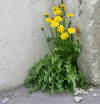 |
dandelion
Appetite-stimulatingly, urinary-afloat, cramp-solving, nephritic sufferings |
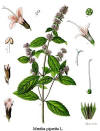 |
peppermint entzündungshemmend, keimtötend, krampflösend, |
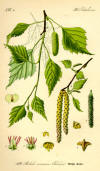 |
birch leafs
Blood-cleaning, eczemas |
 |
blackberry leafs by
diarrhea |
 |
haw hoher Vitamin C Gehalt, Immunsystem stärkend |
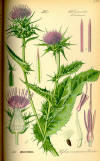 |
thistle Intestinal
discomfort and bilious discomfort |
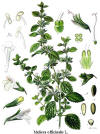 |
balm Cramp-solving,
bacteria and mushroom killing, analgesic, looks reassuring |
 |
parsley Indigestion |
 |
Spitzwegerich Respiratory
illness, appetite-stimulatingly |
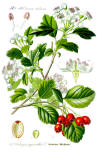 |
Whitethorn Heart
problems, bad circulation |
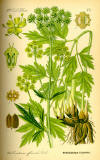 |
Lovage With nephritic suffering and gastric trouble,
draining, not in the pregnant period |
 |
basil With
flatulence, digestion-adjusting |
 |
Echinacea Strengthening of the immune system |
 |
hibiscus Extract
from hibiscus blossoms has similar vessel-protecting qualities like
red wine, grape juice or tea. The Antioxidantien contained in the hibiscus
have a positive influence on the cholesterol values and can bend forward
with it heart illnesses and circulatory illnesses. |
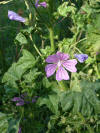 |
mallow Looks
inflammation-restraining |
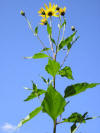 |
Topinambur Metabolism and digestion stimulatingly |
Branches for Chinchillas
| Branches |
Branches should be given basically well dryly. Exceptions are hazelnut
branches which can be also passed freshly. Branches may not be treated with
plant protection agents! |
 |
Apple tree It can be given safely |
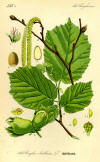 |
hazelnut It can be given safely |
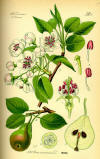 |
Pear tree It can be given safely |
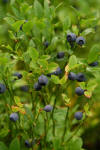 |
blueberry It can be given safely |
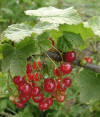 |
currant It can be given safely |
|
|